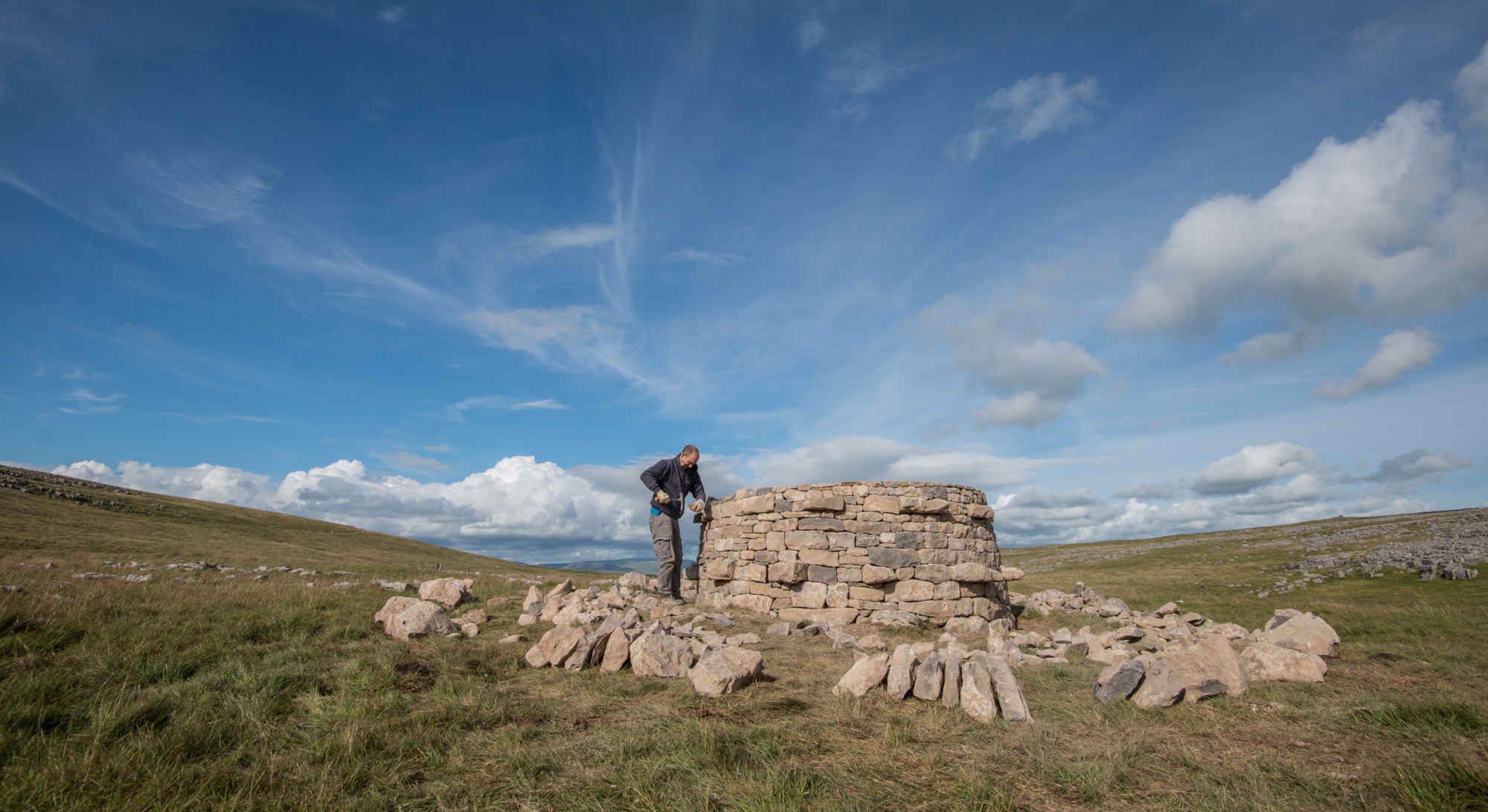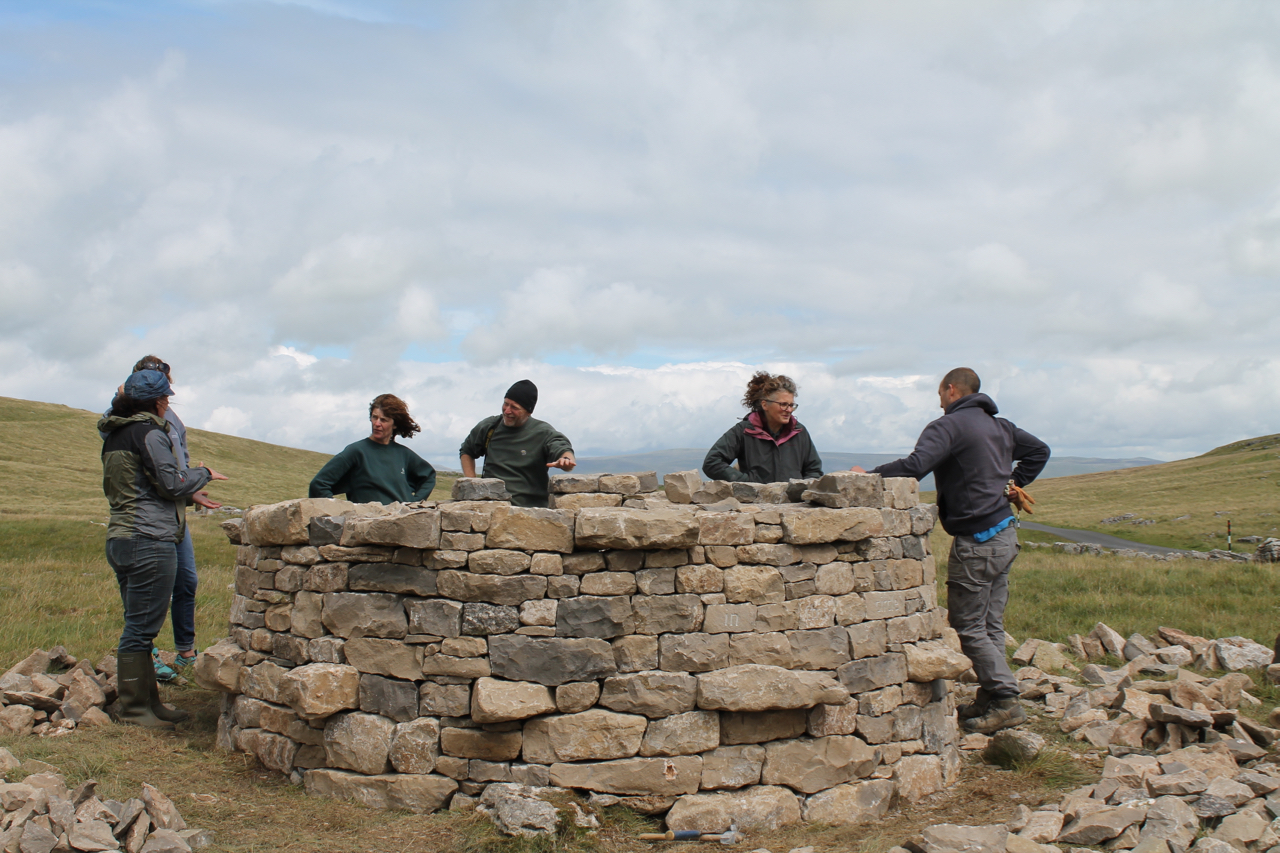From Harriet and Rob Fraser…
The Long View
somewhere-nowhere
The sun’s light on the treefold gives it a softness, a pale glory. The range of greys and browns and whites in this ordered arrangement of limestone chunks are of this land and, here, in this circle, offer a meeting of what’s below earth and what’s above – the limestone that lies beneath the grass and the skitting clouds in the increasingly blue sky.
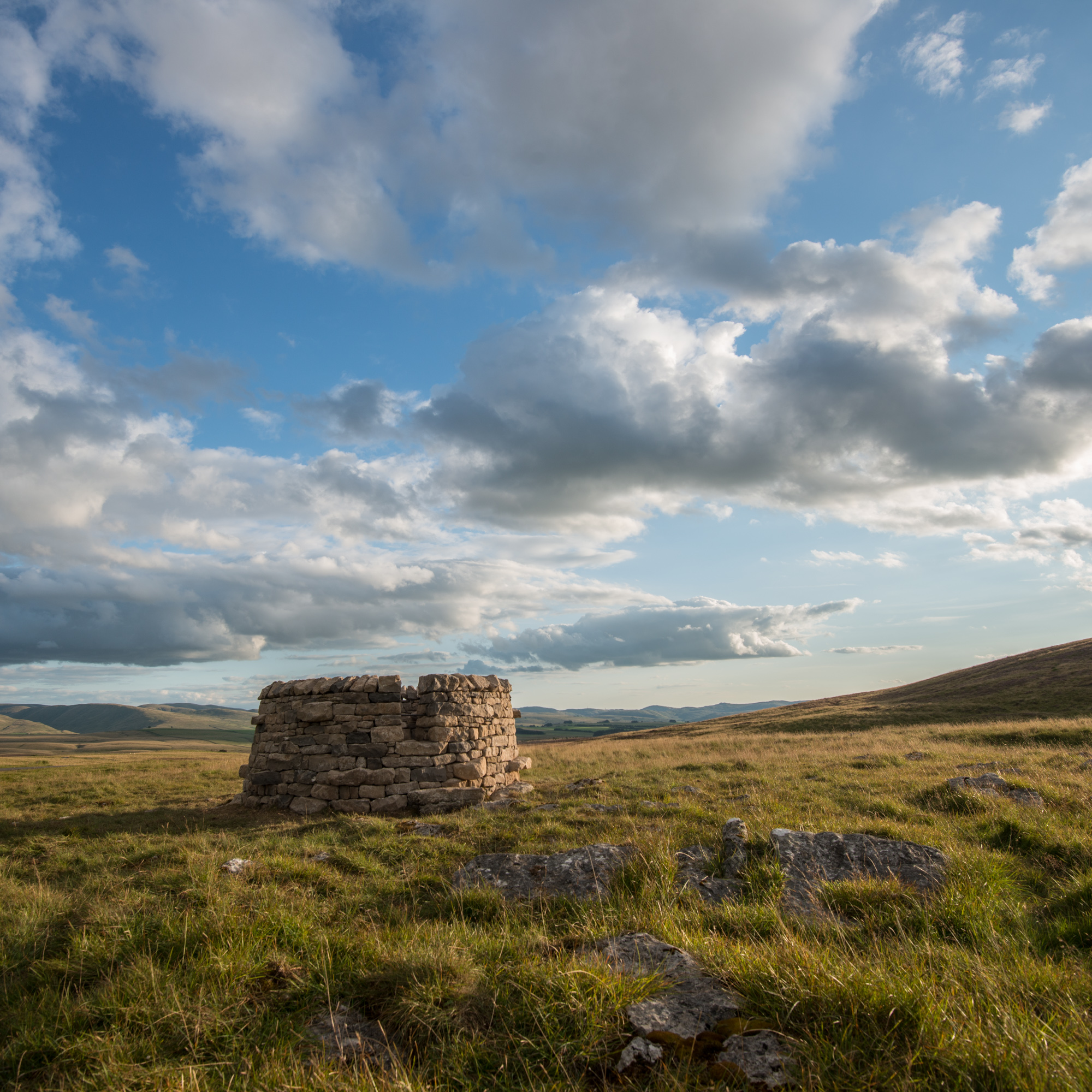 If you came here for the first time you might well think this sweep of blown grass and heather under a broad sky is in the middle of nowhere. The land feels open, wide open, and without boundaries. But, having spent several longs days in this single spot, it has become clear that this is far from the middle of nowhere – it is a crossing point, or a meeting point, between many places: Little Asby, Great Asby, Crosby Garret, Orton, Kelleth, Newbiggin, Mazon Wath, Ravenstonedale, Sunbiggin and other hamlets and villages, small settlements whose intersections converge on a rise of land between two brows of the same rolling back of limestone.
If you came here for the first time you might well think this sweep of blown grass and heather under a broad sky is in the middle of nowhere. The land feels open, wide open, and without boundaries. But, having spent several longs days in this single spot, it has become clear that this is far from the middle of nowhere – it is a crossing point, or a meeting point, between many places: Little Asby, Great Asby, Crosby Garret, Orton, Kelleth, Newbiggin, Mazon Wath, Ravenstonedale, Sunbiggin and other hamlets and villages, small settlements whose intersections converge on a rise of land between two brows of the same rolling back of limestone.
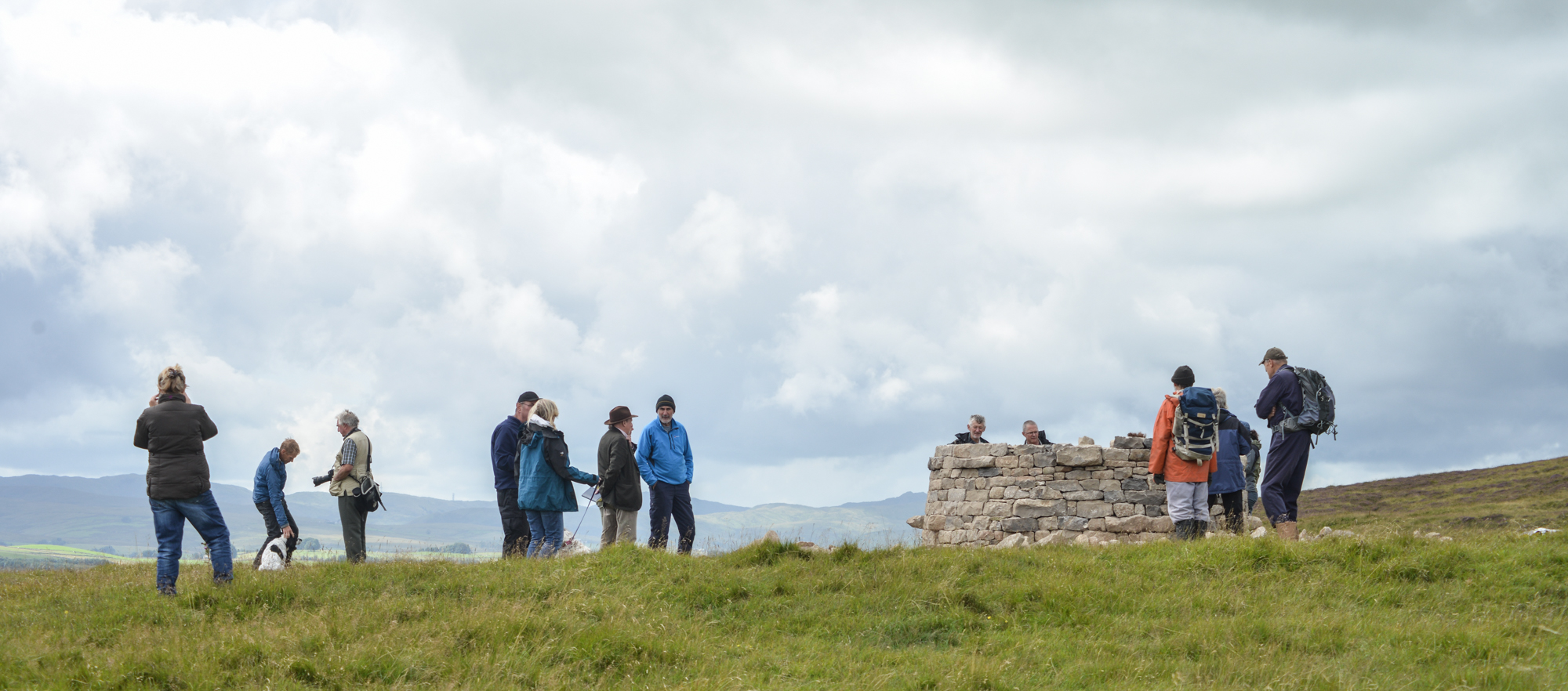 During the five-day build we had a constant stream of visitors. Some were cyclists or walkers, many of whom were following the coast-to-coast path, but many more came from the surrounding villages. There has been an overwhelming sense of enthusiasm and excitement – some people returned a few times to see our progress, others brought friends, children, grandchildren. And with the visits have come stories of the Dowly Tree, once strong and tall, but now a stump. It is spoken of as a boundary marker, the tree that everybody knew who came this way. It is remembered as a meeting place, perhaps for lovers; one woman said she’d come here to watch buzzards perch in it and circle into the sky; some people have photographs of it; some knew it when it was in leaf; poems have been written about it. And everyone is happy that a new tree will be given a chance to grow up here, protected in stone.
During the five-day build we had a constant stream of visitors. Some were cyclists or walkers, many of whom were following the coast-to-coast path, but many more came from the surrounding villages. There has been an overwhelming sense of enthusiasm and excitement – some people returned a few times to see our progress, others brought friends, children, grandchildren. And with the visits have come stories of the Dowly Tree, once strong and tall, but now a stump. It is spoken of as a boundary marker, the tree that everybody knew who came this way. It is remembered as a meeting place, perhaps for lovers; one woman said she’d come here to watch buzzards perch in it and circle into the sky; some people have photographs of it; some knew it when it was in leaf; poems have been written about it. And everyone is happy that a new tree will be given a chance to grow up here, protected in stone.
The Dowly Tree was almost certainly a way marker for travellers, and the stump that now stands is probably the last in a succession of trees that have stood here. As a boundary marker, it holds a line of sight with other trees and stone cairns. The new tree within the treefold, which is about 70 yards from the Dowly Tree stump, will take the same view as those that have stood here before it: looking east to the Pennines, south to the Howgills, and, in the distant west, towards the Lakeland fells. Knotted into this place are stories, genes, beliefs and traditions, and the treefold seems to stand for these. There’s a looking back and also a continuity looking forward, into a future where stones will slowly weather as a tree grows slowly taller within them.
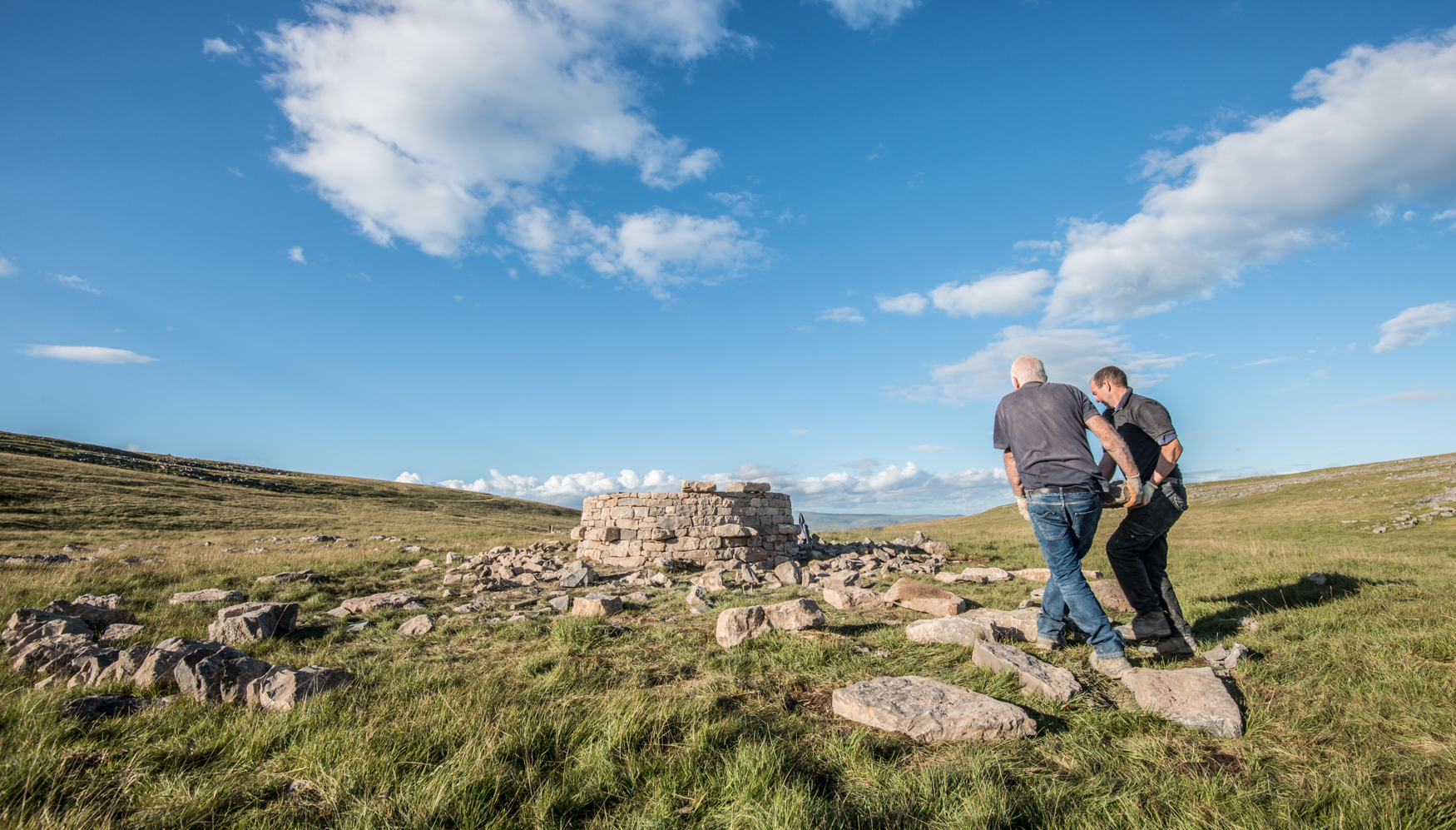
Now that the treefold is here, the build seems almost irrelevant, but the process has been really enjoyable and each time we visit we will remember the build. Rob and I have been tasked mainly with sorting and lifting stones, while Andrew Mason does the building. Watching him work is completely engaging: each individual stone assessed, looked at from different angles, lifted, maybe tapped and hammered, and placed, so that a perfect curve of wall rises slowly. I think the toughest part of this build was placing the bottom throughs, massive stones that are set through the wall and hold it together. Some were too heavy to lift. I made some notes the morning Andew and Rob fitted them in:
We have been working in rain for much of the day. The biggest chore for Rob and Andrew has been getting the bottom throughs in place. They are monster stones. The biggest one is pushing a hundred kilos, the smallest maybe 70. Getting them in place begins with the process of selection and inspection, Andrew deciding which side is to be laid on the wall, which faces up. He dresses them with his hammer to get them right then he and Rob roll the stone towards the wall. A breath in, legs set, hands on and then a lift onto one edge. A small stone (football size) on the ground acts as a pivot and they push the stone onto that and let it roll forward, landing on its opposite edge; then lifting it again, moving the pivot stone, repeating the process, rolling, heaving, rolling – mindful all the time to have feet and fingers out of the way. When they get the through to the wall there’s no option but to lift it – bodies set, arms set, they do it, all but for the heaviest one. For this, they place a couple of stones to offer a pivot and after a massive heave, the stone is on the wall. From here it’s a case of gently swivelling it or lifting inch by inch to get it in the right place – and the right place is a precise thing, within an inch. Even then it’s not ready – they lift the stone onto an edge and Rob holds it while Andrew takes his hammer to it, chipping away so that the stone rests, solid and completely unmovable, on the top of the wall. There are ten throughs in the end – most of them overhanging sufficiently to make seats inside the treefold. They sit as if on a clock face, angled in towards the centre of the treefold, and we take a break.
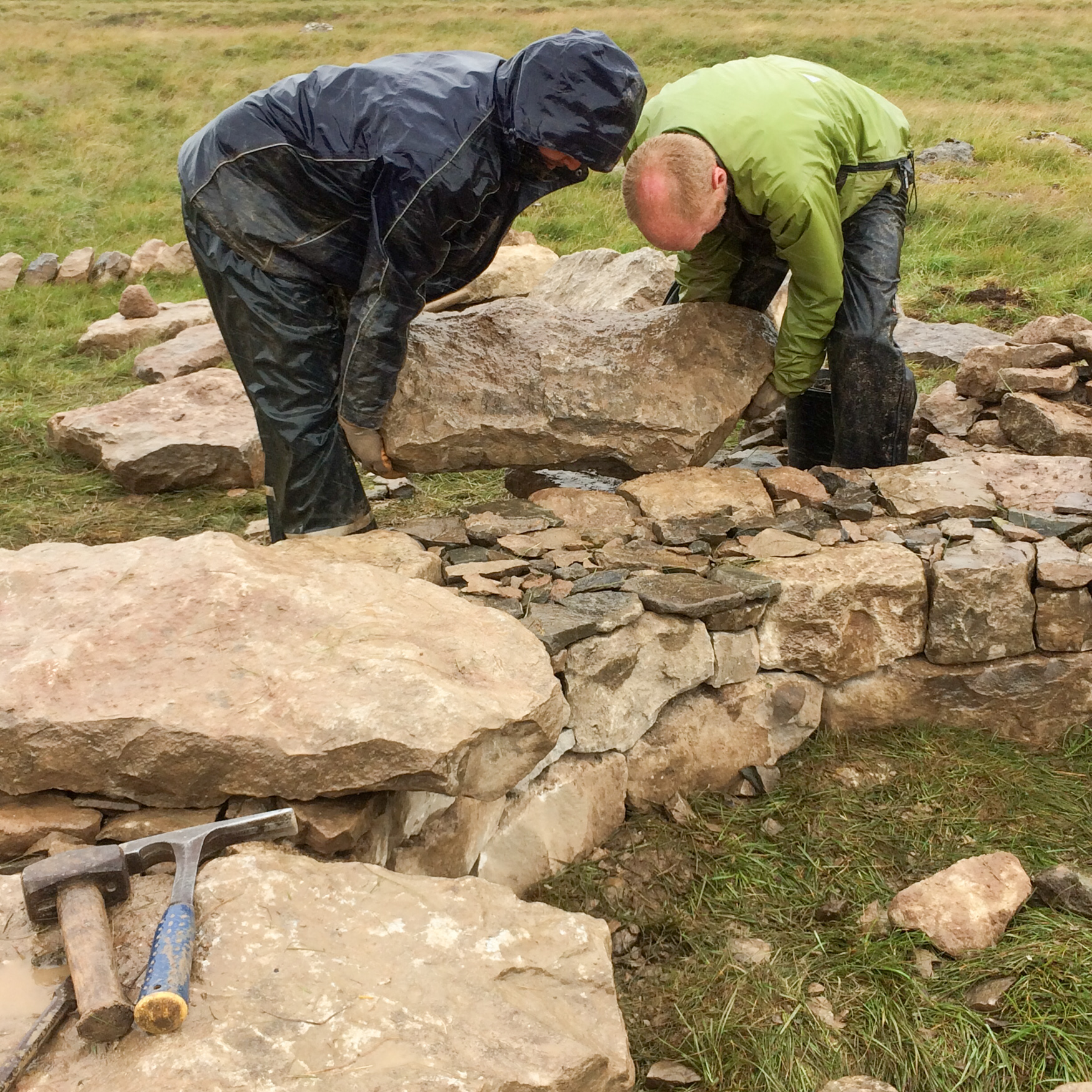
Planting the tree
One local visitor, who has been effervescent with excitement throughout the week, told me the treefold feels like an embrace. And it’s true – even though it’s built of hard material it has a softness, and if you climb in to its windless centre, there is a peace and a quiet, the sky changing above and, visible through the entrance, the old Dowly Tree. She also asked for a champagne celebration when a new tree is planted here, this coming winter. Let’s see what we can do about that!
The emerging poem
in treefold:east :
in this circle of land’s bones
moments gather into wood
in treefold:centre :
seeds, ideas, earth, light
elements entwine
a slow graft of time
The final treefold
The final line of the poem will be revealed when the third and final treefold is built. We’ll announce the drop-in date soon.
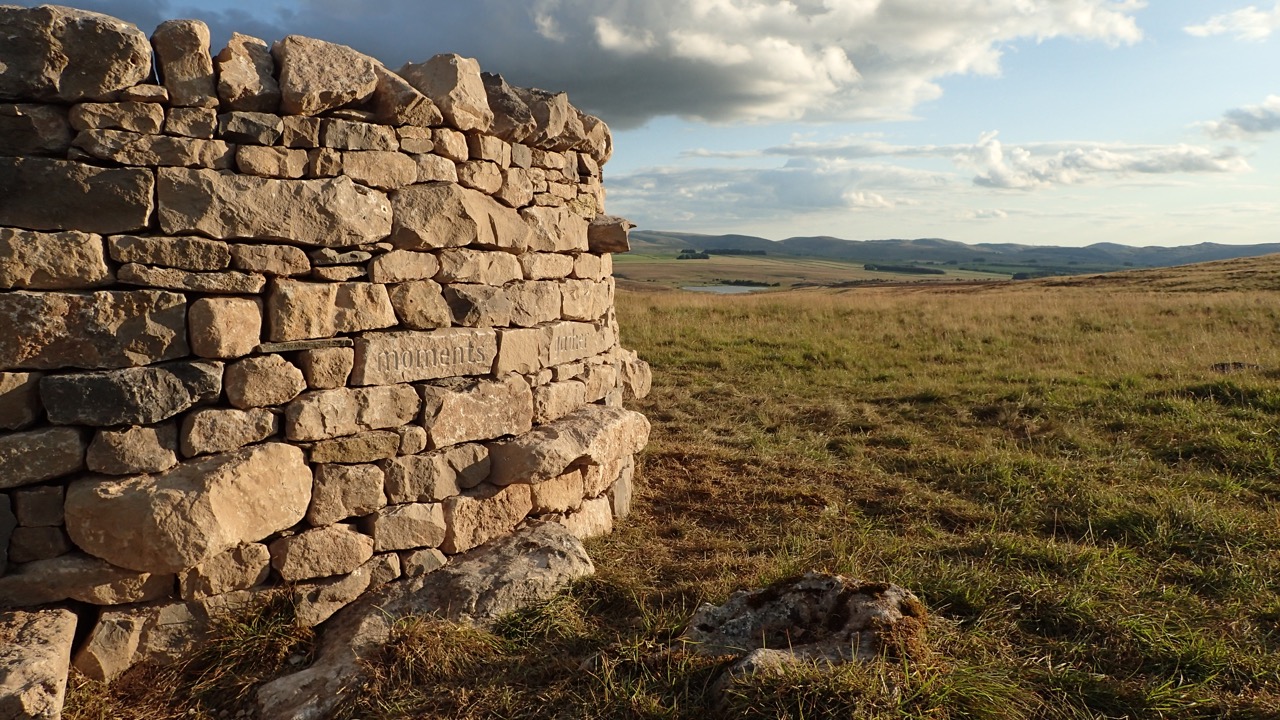
More about treefolds and Little Asby Common
If you’ve just joined this blog, you will find out more about the three treefolds we are building here. treefold:east is the second to be built – the first, treefold:centre, was completed in Grizedale Forest at the end of July. The treefolds are part of Common Ground’s Charter Art Residency programme, which involves eight artists (or artist collaborations) across the UK who are creating legacies to mark the 800th anniversary of the original Charter of the Forest, and the launch of a new Charter for Trees, Woods and People this year.
The treefolds also offer a legacy for The Long View – something that celebrates trees and landscape and offers an invitation to pause a while. The treefolds, the trees within them, and the landscapes around them, will gradually change over the decades. On Little Asby Common we’re delighted to have support from the Friends of the Lake District, which owns this section of land. Just up the hill from treefold:east, curving out of ancient, weathered limestone, is the Little Asby Hawthorn, a tree we have come to know very well over the last few years.
